Brand Reputation Monitoring: What It Takes to Get It Right

A brand's reputation online is based on more than customer feedback and online reviews. What people say about you when you're not there—what they chat up the social media platforms, positive or negative mentions on forums and online communities—all kinds of online mentions contribute to building and changing your brand image.
These days, your brand can be canceled on TikTok, praised on Reddit, questioned in Instagram DMs, and debated in a tweet thread—all in the same week.
Whether you're a fashion label, a food delivery app, or a fintech startup, perception travels fast and sticks hard. Just ask Balenciaga after that campaign, or Glossier, when their once-beloved aesthetic started to feel more exclusionary than inclusive.
The truth? You can’t control what people say—but you can listen, understand, and respond with intention. That’s what modern brand reputation monitoring and management is all about.
The evolving challenge of online reputation management
There was a time when online reputation management meant monitoring Yelp reviews and hoping for a good Google rating. Today? That barely scratches the surface.
Reputation lives across TikTok stitches, viral Threads, Instagram story rants, niche Discord servers, and anonymous Reddit posts. It’s shaped by influencers, former employees, meme accounts, and everyday customers with a strong opinion and decent Wi-Fi.
Take what happened with Crocs—not long ago, the brand was a fashion punchline. But by leaning into pop culture collabs (like the Post Malone and MSCHF drops), they flipped the narrative into one of bold self-expression. On the flip side, remember when Robinhood froze trading during the GameStop saga? That single decision triggered a social firestorm that shook public trust.


Source: Skiles
So, as ancient Romans said, Tempora mutant (times change). Brand reputation is a living thing—an ever-evolving reflection of how people feel, speak, and act online. And if you’re only listening to surface-level chatter, you’re already behind.
What is brand reputation monitoring?
Online reputation management isn’t just about damage control anymore. It’s not something you scramble to do after a crisis hits—it's a long game of building credibility, earning trust, and showing up consistently in the eyes of your audience.
In fact, it covers a wide range of brand interactions:
Monitoring brand mentions in real time across all the places your audience hangs out—whether that’s Twitter/X, Reddit, TikTok, or a customer support thread.
Addressing customer feedback—both glowing as well as negative reviews (those brutally honest takedowns)—with clarity, empathy, and a plan.
Correcting misinformation before it snowballs, especially when it starts in unexpected corners of the internet.
Spotting trends and mood shifts in how your audience talks about you over time, not just in the moment. To identify trends, you'll need eyes everywhere. From Google alerts, industry-specific review sites, social media channels, and other spots on the internet where your audience hangs out.
It’s also about guiding perception. Remember how Duolingo went from being “that owl app” to a viral brand known for snarky TikToks and unexpected collabs? That didn’t happen overnight. It was built with a smart, persistent, and very online approach to how the brand shows up and responds.


Source: Duolingo
Online reputation management is now a strategic function—one that blends listening, storytelling, customer care, and cultural awareness. And done right, it becomes one of your strongest growth levers.
Key areas to focus on to improve your brand’s online reputation
Improving your brand’s online reputation is about getting a bunch of small, critical things right. It’s not a campaign, it’s a practice.
Here are the areas that matter most. From how you listen to what’s being said to how you respond (and who’s involved), these are the levers that shape a strong online reputation for your brand in 2025.
Monitor all relevant channels — not only review platforms
Social media and brand monitoring aren’t optional anymore—they’re foundational.
The conversation about your brand can start anywhere: a tweet, a comment on Instagram, a TikTok with 4 views that suddenly hits 2 million overnight. Sometimes it’s a glowing shoutout. Sometimes it’s a sarcastic meme that goes viral for all the wrong reasons.
And the biggest shifts? They rarely start on review sites. They start with creators, customers, or critics having a moment, and a target audience for their social media posts.
Look at what happened when a customer filmed their Starbucks order being made incorrectly three days in a row. It wasn’t about the drink. It became a thread on consistency, customer care, and how brands handle imperfection. That narrative didn’t unfold on Yelp—it unfolded in real time on social.
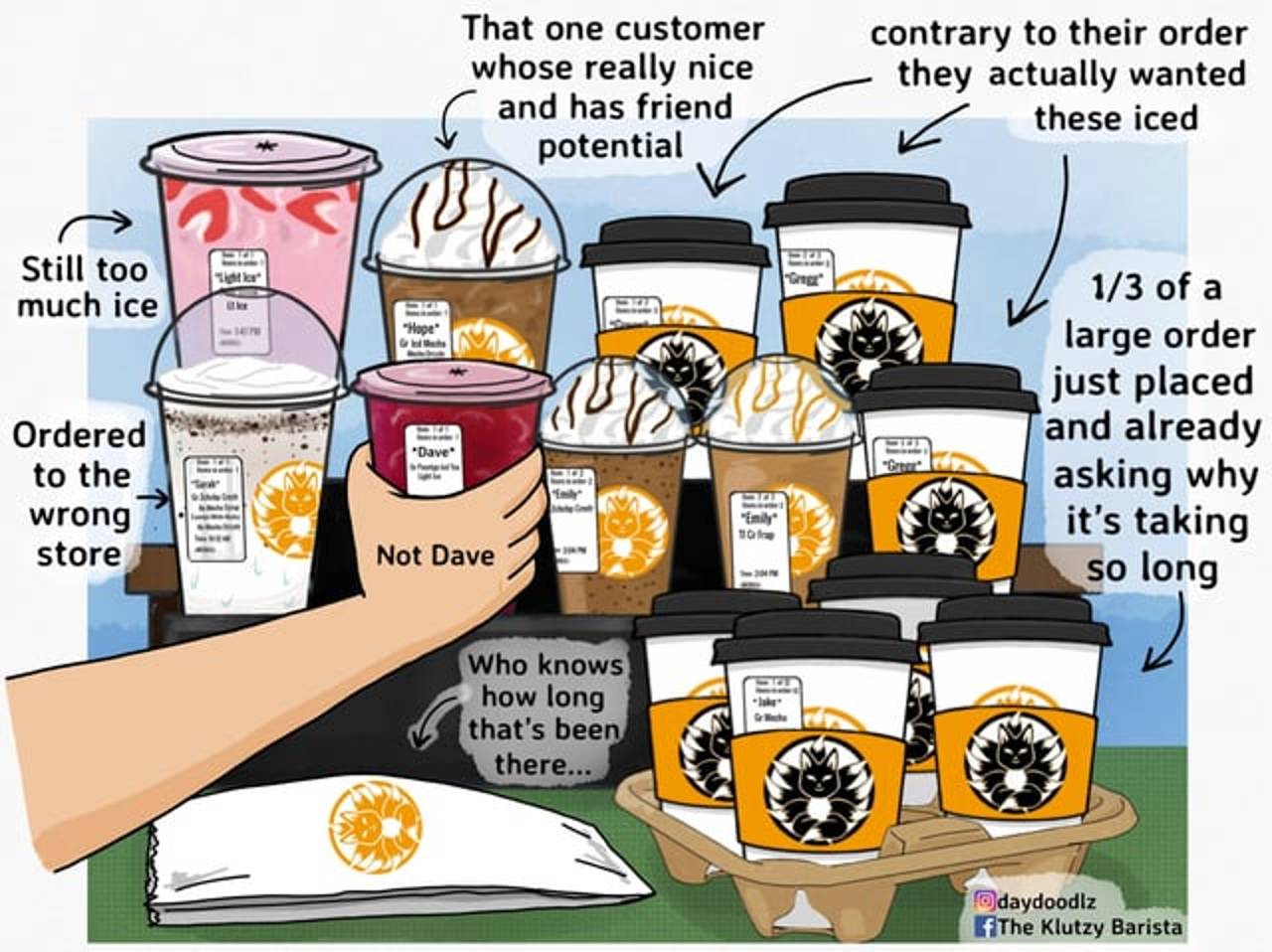

Source: Reddit
Respond consistently and strategically to customer feedback
A good response is more than simply a brand reputation strategy. It can turn a critic into a fan. A bad one can turn a small complaint into a headline and destroy a positive brand reputation you've worked hard on setting up.
Whether it’s a one-star review, a frustrated comment on Threads, or a viral TikTok calling you out, how—and when—you respond matters just as much as what’s being said. In that sense, reputation management efforts are highly dependent on being there and being present all the time.
Copy-pasting generic replies might save time, but it chips away at trust. People can tell when a brand is phoning it in. On the other hand, a well-timed, thoughtful reply can soften a negative experience—or even reverse it entirely.
There was a time when Delta responded to a passenger complaint about lost luggage by sending real-time updates and a personalized apology tweet (plus a small voucher). The post went viral—not because of the issue, but because of the response. The brand looked human. That’s what stuck.

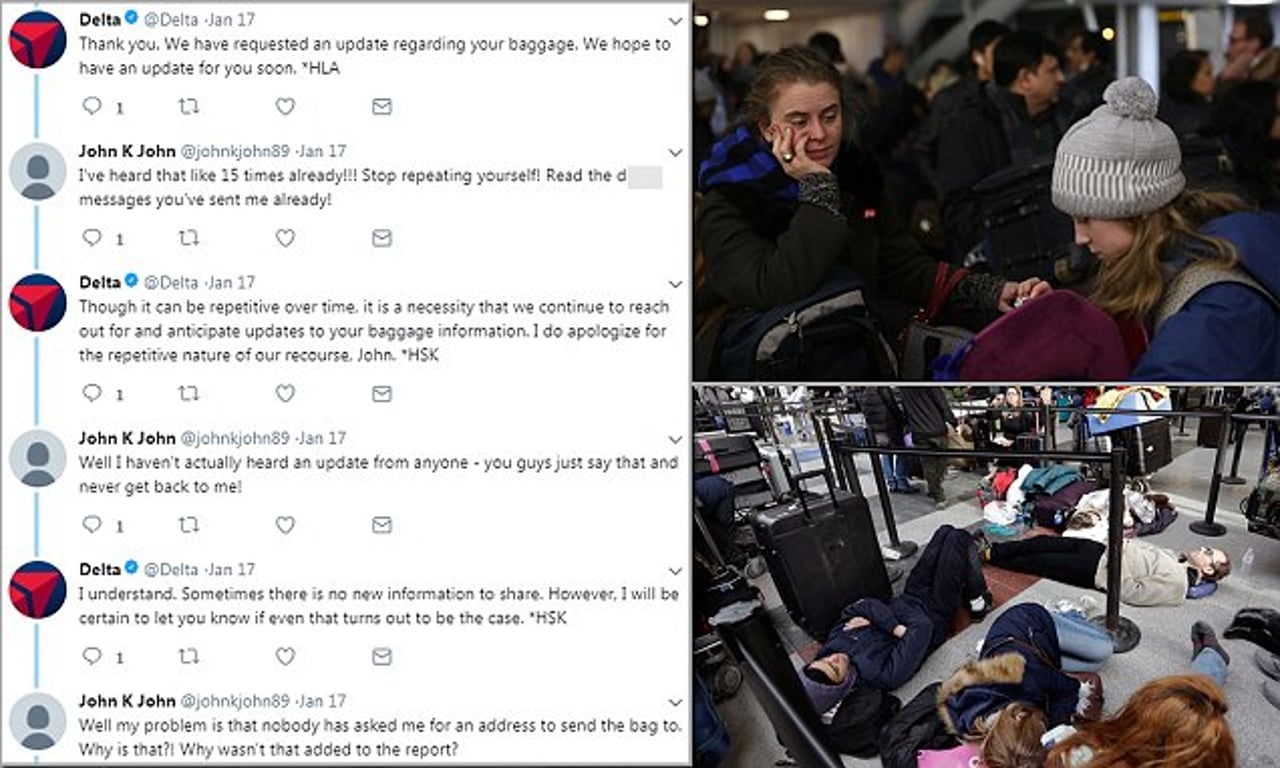
Source: Daily Mail
When responding to feedback:
Keep the tone human, not corporate.
Acknowledge the concern and negative sentiment—don’t dodge it.
Respond in the same space where the online conversations are happening, via the same social channels.
Avoid over-automating, especially for sensitive issues.
Keep monitoring your online reputation and create real-time alerts to make sure you don't miss anything.
Consistency also counts. If support says one thing and social says another, it creates friction that chips away at your credibility. Keeping the best online reputation is a team sport—your responses should reflect that.
Build credibility before a crisis hits
You can’t build trust in the middle of a fire. By the time a crisis breaks out, your audience has already decided whether they believe you or not.
That’s why reputation work should start before anything goes wrong.
The brands that weather storms best are the ones that show up consistently: they’re transparent when they make a mistake, generous with credit when things go well, and vocal about their values in ways that feel real, not like PR exercises.
Take Patagonia, for example. Their audience already expects them to stand for something. So when they speak up about climate issues or donate profits, it lands as credible, not performative. That credibility was built over the years, through actions, not ad copy.


Source: Patagonia
On a smaller scale, even simple actions matter: sharing customer stories, highlighting your team’s effort behind the scenes, and being upfront about shipping delays or product changes. These moments don’t always go viral, but they add up.
Reputation isn’t just what you protect. It’s what you earn.
Track sentiment and audience shifts over time
Brand reputation isn’t fixed—it moves. It shifts with trends, cultural conversations, and changes in your product or messaging. What people loved you for last year might be the very thing they question next quarter.
That’s why one-off sentiment reports don’t cut it anymore. If you're only checking in when something big happens, you're missing the slow-burn shifts that shape how people feel about your brand over time.
Case in point: when Instagram quietly changed its algorithm to prioritize Reels, users started expressing frustration about losing photo content. Brands that had once been community favorites suddenly faced backlash, not because they changed, but because the social media platform did, and those brands didn’t adapt fast enough.
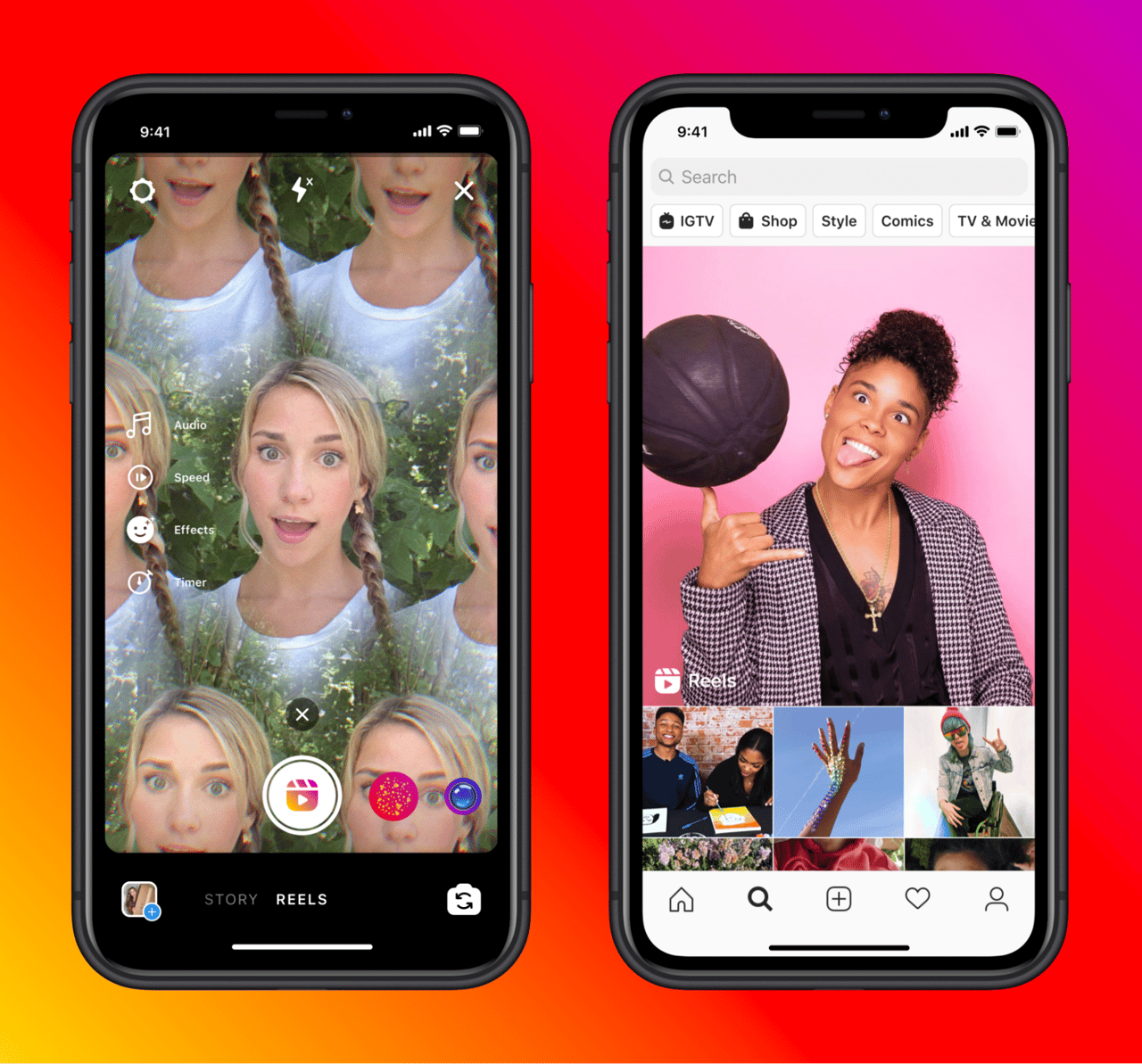

Source: Meta
Tracking sentiment over time helps you catch those early signs:
Are specific audience segments growing more negative or more disengaged?
Are expectations shifting?
Are there new themes emerging in how people talk about you?
Brand reputation management today means zooming out as often as you zoom in. It’s about seeing the patterns behind the posts and understanding that public perception and your online reputation are as dynamic as your audience.
Involve the right people internally
Brand reputation management isn’t something one team can manage on its own, especially not the PR team.
The way your brand is perceived online is shaped by every interaction, across every touchpoint. A delayed support ticket, a confusing product update, a snarky reply from your social media team, or a vague CEO comment on LinkedIn—each of these can impact how your audience feels about you.
That’s why online reputation needs to be a shared responsibility. Customer service teams are often the first to spot brewing frustrations. Product teams can explain the why behind changes before the audience fills in the blanks. Social media managers are your front line. Leadership sets the tone for how transparent, humble, or defensive your brand feels in moments of pressure.
Brands that get this right treat reputation like a relay, not a solo sprint. They align internally, share insights across teams, and respond with one voice—whether it’s praise, criticism, or crisis. This helps them maintain a positive reputation and positive online presence across all channels.
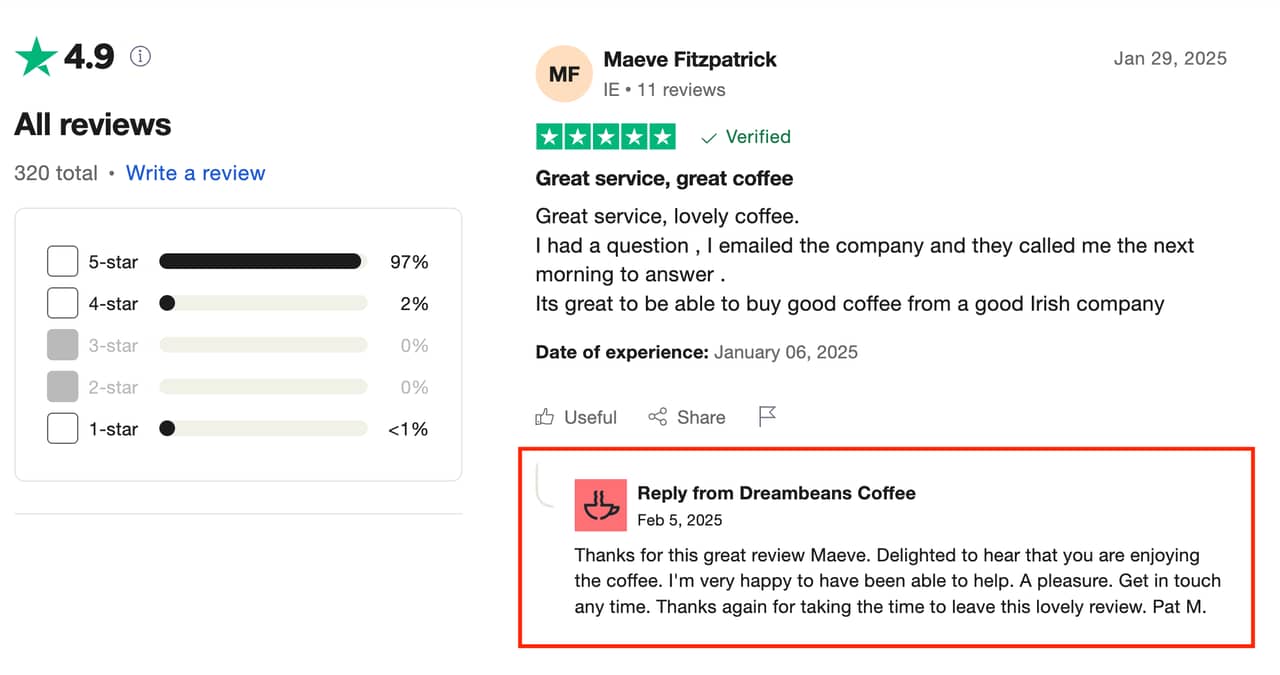

Source: Trustpilot
Brand reputation isn’t just built on what you say. It’s built on how your whole company behaves.
Tools and tech that support smarter reputation management
Managing and maintaining a strong brand reputation at scale requires more than good instincts. You need the right tech stack—social media monitoring tools built to track mentions across platforms, surface valuable insights, and help you respond with speed and clarity.
Here are the key categories of online reputation management tools that leading brands rely on today:
Social listening platforms
These are the foundation of comprehensive reputation monitoring. Social listening tools help you track mentions across social networks, forums, blogs, and even visual content. They don’t just show you what’s being said—they reveal how your audience feels, using artificial intelligence to detect sentiment shifts, trending topics, and cultural undercurrents.
If your audience is active on TikTok, Reddit, or niche forums, these tools make sure you’re not missing the conversation.
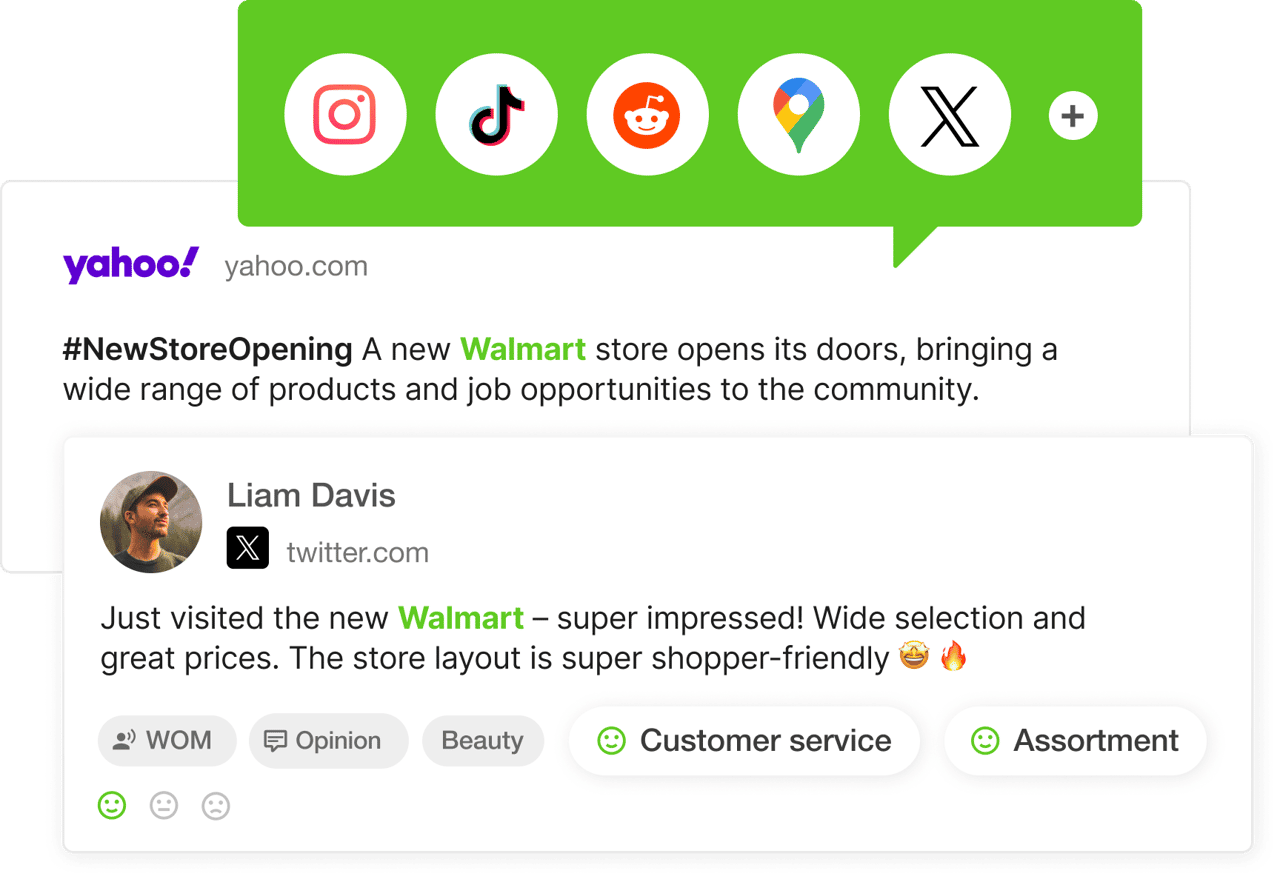

Source: YouScan
-1712239062.png)
-1712239062.png)
Online reviews monitoring and management
It’s not just about social. The best online reputation monitoring tools also help you monitor reviews across platforms like Google, Yelp, Trustpilot, and industry-specific review sites. You’ll get alerts when new reviews come in and dashboards that show how feedback trends over time.
And review management matters. Quick, thoughtful responses—especially to critical reviews—can signal accountability and rebuild trust in a very public way. Moreover, keeping tabs on online reviews is the cornerstone of crisis management, enabling you to make the right steps and keep a strong reputation above all.


Source: Trustpilot
Sentiment and crisis detection systems
A good reputation monitoring tool does more than flagging negative comments—it spots patterns in customer sentiment, enabling deep customer insights and helping you gain a competitive advantage, crucial for your business growth.
AI-powered sentiment analysis tools help you identify mood shifts and emotional tone, while crisis detection systems alert you to sudden spikes in volume or negativity. These software solutions help you act early, before a single comment turns into a trending story.
Search engine and media monitoring
What shows up in search engine results can define your reputation long after a conversation ends. Tools in this category help track your brand's presence in news coverage, blogs, and search queries. They also identify when outdated, inaccurate, or problematic content needs to be addressed—or buried with better content.
Media reputation presents long-tail reputation protection, beyond just social media.
Furthermore, valuable tools enable you to analyze trends and get on top of the hottest happenings. When choosing the right tool for effective reputation management, try comprehensive software that incorporates a trend analysis tool as well.
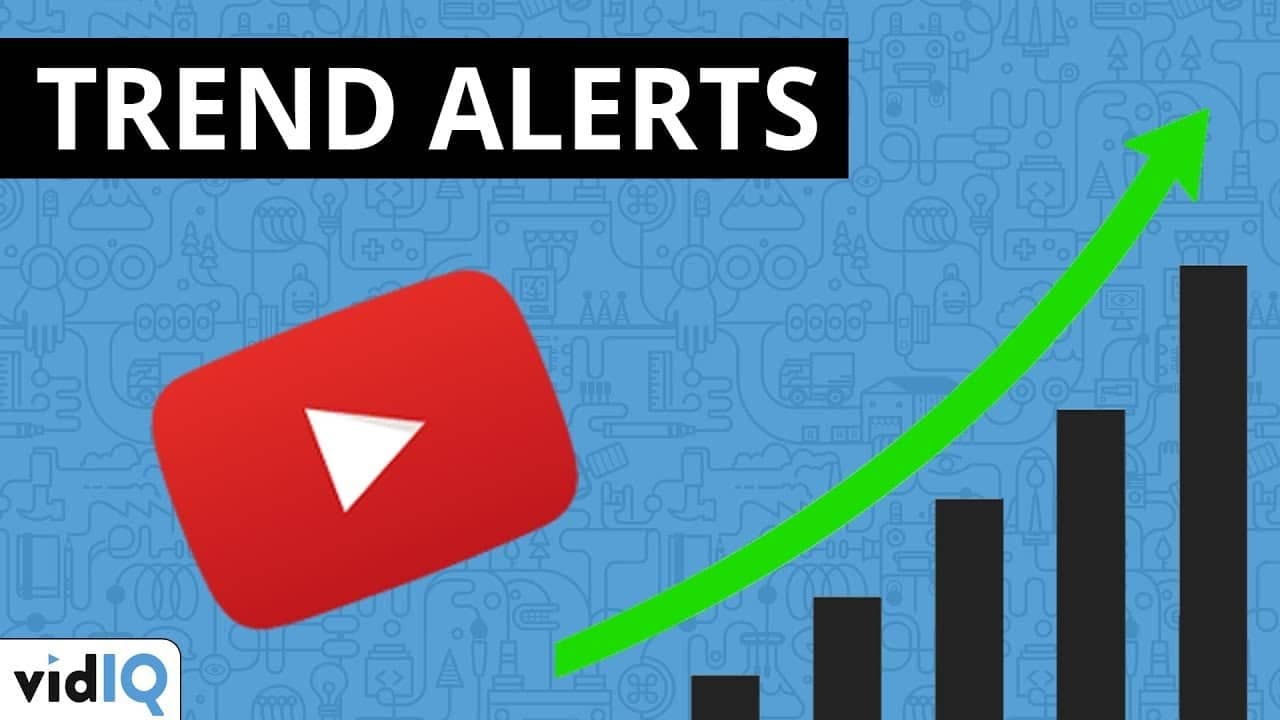

Source: YouTube
Centralized dashboards and reporting
The real power of online reputation management tools comes when they unify all the data—social, reviews, search, and sentiment—into a single, shareable view. This allows different teams to access the same valuable insights and collaborate on messaging, strategy, and response.
Modern dashboards turn noise into clarity—and help you make smarter, faster decisions.
Reputation risks to avoid (and how to prevent them)
Even the healthiest brands can stumble when it comes to managing online perception. Often, it’s not the crisis itself that causes long-term damage—it’s how the brand reacts (or doesn’t).
Here are some of the most common mistakes that put your reputation at risk—and how to stay ahead of them with the right process, clarity, and responsiveness:
Slow response time — Reputation hits fast. Waiting too long to reply can make your brand seem indifferent or out of touch. Set up real-time alerts and have clear response protocols so your team can act quickly when something sparks.
Ignoring neutral or negative feedback — Not every comment will be a crisis, but silence adds up. Acknowledge all types of feedback, especially the lukewarm or skeptical. It’s often where the most honest insights (and reputation repair opportunities) live.
Inconsistency between departments — When support says one thing, social says another, and leadership stays silent, trust erodes. Create internal alignment by sharing reputation insights across teams and maintaining a unified tone and message.
Over-automating responses — Bots don’t do empathy. And copy-paste replies can escalate frustration instead of resolving it. Use automation for triage, not for emotional, public-facing replies. Personalize responses where it counts.
Trying to “cover up” bad press — Attempting to delete or downplay a legitimate issue almost always backfires. Be transparent, take accountability, and focus on next steps. Audiences respect honesty more than spin.
Mistakes happen. But managing them well is what turns a potential reputation loss into a moment of growth.
Reputation is a reflection of a real connection
Your brand’s reputation isn’t just about what you say—it’s about how people experience you, talk about you, and feel about you over time. The best strategies are built on curiosity, responsiveness, and showing up with intention.
That means listening closely, responding with empathy, and making every interaction count. Reputation is a long game, and trust is earned moment by moment.
Want a clearer picture of what your audience really thinks? Get a demo of YouScan and see how deeper insights can help you build stronger connections.
FAQs
How to monitor brand reputation?
Use a mix of tools for social media monitoring, review tracking, and sentiment analysis. The goal is to track mentions across platforms and understand both what’s being said and how people feel about your brand.
What KPI is used to measure brand reputation?
Common KPIs include sentiment score, share of voice, volume of brand mentions, review ratings, and Net Promoter Score (NPS). Some brands also track brand health over time using composite indexes.
Can you measure brand reputation?
Yes. With the right tools, you can measure sentiment trends, brand visibility, and audience perception across channels. While it’s not a perfect science, consistent monitoring gives you valuable insights into how your brand is evolving.
How to master the 3 pillars of brand reputation management?
Focus on:
Awareness – Listen actively to what’s being said about your brand.
Response – Engage consistently and transparently.
Proactivity – Build credibility before a crisis by sharing values, stories, and progress.



.png)